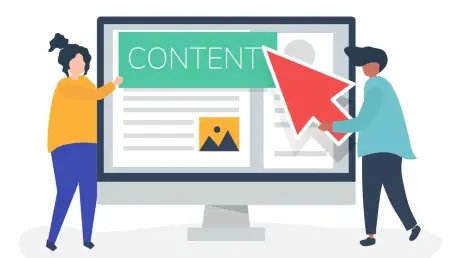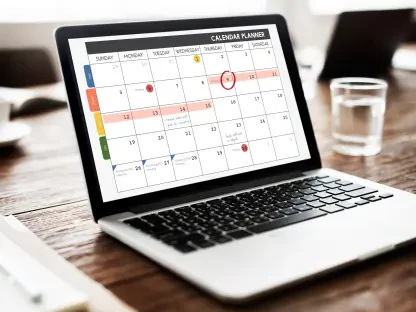In today’s digital landscape, standing out on Instagram amidst over 2 billion monthly active users demands more than just random posts; it requires a meticulously crafted strategy that aligns with broader marketing objectives to ensure visibility and impact. Many brands struggle to gain traction on this highly competitive platform, often due to a lack of direction in their content efforts. Without a clear plan, even the most visually appealing posts can fail to resonate with the target audience or drive meaningful results. A well-designed content plan acts as a vital roadmap, ensuring that every post serves a purpose, whether it’s building brand awareness, boosting engagement, or driving conversions. This guide offers actionable insights and a free customizable template to help brands navigate the complexities of Instagram marketing. By following a structured approach, businesses can transform scattered efforts into a cohesive strategy that captures attention and fosters growth on the platform.
1. Develop Your Content Schedule
Creating a structured content schedule is the foundation of an effective Instagram strategy, guiding brands toward their goals and ensuring campaigns are executed with precision. A comprehensive schedule helps in mapping out posts, tracking progress, and maintaining a consistent presence—key factors for success on the platform. The provided template includes an Overview tab for outlining campaign cycles, key conversion goals, strategic themes, and content pillars with associated budgets. Additionally, monthly planning tabs with flexible weekly layouts offer a clear view of the content pipeline, making it easier to spot gaps and organize ideas, themes, and marketing initiatives. Brands can download this Instagram content plan template, create a personal copy, and begin by filling out the Overview tab to establish a high-level strategy before diving into detailed weekly planning.
Once the overarching framework is set, the focus shifts to refining execution on the weekly sheet by selecting topics, determining post types, crafting captions, aligning content with campaign objectives, and defining calls to action (CTAs) that support marketing funnel goals. After laying out initial plans and captions, the next step involves creating or assigning necessary visuals or assets to bring the content to life. Breaking down the planning process into smaller, actionable tasks simplifies the creation of a content schedule, making it less overwhelming. As a bonus tip, syncing with existing marketing efforts can amplify impact—use the template’s dashboard to map seasonal themes, align topics with posting days, and prepare captions and hashtags for seamless scheduling. Integrating initiatives like product launches or holiday promotions through teasers, giveaways, or influencer collaborations can further enhance engagement and brand visibility.
2. Establish Your Objectives
Defining clear objectives is a critical step before scheduling any Instagram posts, as it sets the direction for what the brand aims to achieve on the platform. Whether the goal is to expand the follower base, increase engagement rates, or drive product sign-ups, having a specific target in mind ensures that content efforts are purposeful. Key performance indicators (KPIs) should be established to monitor progress throughout the campaign cycle, such as aiming for a 20% audience growth or achieving a 0.43% engagement rate by the end. Breaking these larger goals into smaller milestones allows for a structured approach, making it easier to track advancements and adjust strategies as needed. This process ensures that every piece of content contributes to the overarching mission.
Beyond setting KPIs, it’s essential to brainstorm the types of content, topics, or series that can drive the desired outcomes, such as engagement or conversions. Identifying specific milestones along the way helps in mapping out the necessary content to meet each target, ensuring a balanced and strategic approach. Goals should adhere to the SMART framework—Specific, Measurable, Achievable, Relevant, and Time-bound—to guarantee they are realistic and actionable. This methodical breakdown not only clarifies the path forward but also provides a framework for evaluating success at each stage. By aligning content creation with well-defined objectives, brands can maximize their impact on Instagram and achieve measurable results.
3. Maintain a Unified Style and Voice
Consistency in style and voice across Instagram posts is paramount to keeping audiences engaged and reinforcing brand identity. Developing a brand guide that outlines visual and tonal standards—covering elements like style, typography, and color palette—ensures that every post feels cohesive and recognizable. Inspiration can be drawn from existing assets such as the company website, current content, and logos to shape the tone and theme of Instagram visuals. Standardizing the look of photos and videos, perhaps by using consistent angles or filters, further solidifies the brand’s aesthetic. This unified approach helps in creating a professional and memorable presence on the platform.
Equally important is the consistency in messaging, which can be achieved by establishing standard operating procedures (SOPs) for captions, comments, and responses to direct messages. This becomes especially crucial when multiple team members manage the account, as it guarantees that all interactions reflect the brand’s tone, regardless of who is responding. A well-defined voice builds trust with the audience and ensures that consumer interactions are handled with uniformity and care. By maintaining both visual and verbal consistency, brands can craft a distinct identity on Instagram that resonates with followers and sets them apart in a crowded digital space.
4. Highlight Your Originality: Instagram Content Formats
Instagram offers a variety of content formats that go beyond basic photo-sharing, providing brands with opportunities to showcase products, entertain, engage, and educate their audiences. Photos remain a powerful tool to highlight unique selling points (USPs), share thought leadership quotes, relatable memes, or announce feature updates, with captions used to pose questions or promote deals. Carousels allow the posting of up to 20 images at once, ideal for storytelling or text overlays that encourage users to swipe through. Reels, as short-form videos, are perfect for product teasers or behind-the-scenes content to build excitement, while Stories offer temporary 24-hour content that can be saved to profile highlights for lasting impact. User-generated content (UGC) from influencers or customers extends reach and builds trust by showcasing authentic experiences with the brand.
Experimenting with these formats allows for creative expression and can significantly boost engagement when tailored to the audience’s preferences. Analyzing competitors’ viral posts and adding a unique twist specific to the brand can provide inspiration for innovative content. Each format serves a distinct purpose, whether it’s educating through detailed carousels or fostering connection via candid Stories. By diversifying content types and aligning them with strategic goals, brands can maintain a dynamic presence on Instagram that captures attention and drives interaction. Leveraging the full spectrum of available formats ensures a versatile and compelling content mix.
5. Write Engaging Captions and Calls to Action (CTAs)
While high-quality visuals are essential for grabbing attention on Instagram, captions and calls to action (CTAs) play a crucial role in sustaining interest and prompting user action. A well-crafted caption complements the visual content by providing context, telling a story, or sparking a conversation, ensuring that the audience remains engaged beyond the initial glance. CTAs, in particular, must be clear, concise, and written in an active voice to encourage specific actions such as following the page, liking the post, or making a purchase. These elements together create a seamless transition from interest to engagement, guiding followers toward the desired outcome.
To optimize the effectiveness of captions and CTAs, employing A/B testing can reveal which approaches resonate most with the audience. Experimenting with different tones, lengths, or action phrases helps in identifying the most impactful strategies for specific campaigns. This data-driven method ensures that content not only captures attention but also drives measurable results, whether that’s increased interaction or conversions. Crafting compelling text alongside striking visuals transforms a simple post into a powerful tool for building connections and achieving marketing goals, making every word count in the competitive Instagram environment.
6. Select the Right Hashtags
Hashtags are a vital component of Instagram strategy, significantly expanding the reach of posts beyond existing followers to new audiences within relevant niches. Thorough research into hashtags that align with the brand’s content and target demographic can enhance visibility, connecting posts with users actively searching for or interested in specific topics. By strategically incorporating hashtags, content becomes discoverable to a broader audience, increasing the likelihood of engagement and follower growth. Tracking which hashtags yield the best performance provides valuable insights for refining future posts and maximizing exposure.
Focusing on high-performing hashtags allows brands to tailor content specifically for those tags, further boosting brand awareness and interaction rates. This targeted approach ensures that posts are seen by users who are most likely to engage with or follow the account, creating a cycle of growth and visibility. Regularly updating hashtag strategies based on performance data keeps content relevant in an ever-changing digital landscape. Effective hashtag use transforms posts into powerful tools for discovery, ensuring that the brand reaches the right people at the right time with minimal effort.
7. Identify Optimal Posting Times
Scheduling Instagram posts in advance is a practical way to streamline social media efforts and reduce the stress of last-minute content creation. Tools like Meta Business Suite enable brands to plan and schedule content for both Instagram and Facebook across days or even weeks, ensuring a consistent posting rhythm. Researching industry-specific data or relying on general recommendations for optimal posting times can maximize engagement and views, as timing significantly impacts visibility. Considering upcoming holidays is also crucial—deciding whether to celebrate, run promotions, or pause posting on those days helps in aligning content with audience expectations.
Adjusting posting schedules based on audience activity patterns ensures that content reaches followers when they are most active online, increasing the likelihood of interaction. Testing different times and days to identify peak engagement periods specific to the brand’s audience can further refine this strategy. A thoughtful approach to timing not only enhances reach but also demonstrates an understanding of audience behavior, fostering stronger connections. By prioritizing optimal posting windows, brands can ensure their content cuts through the noise of a crowded platform and achieves the desired impact.
8. Track Performance and Make Adjustments
Monitoring performance through Instagram Insights, accessible via the app or Meta Business Suite, provides critical data on post views, engagement metrics like likes, shares, comments, and saves, as well as results from paid activities. These analytics reveal which types of content resonate most with the audience, offering a clear picture of strengths and areas for improvement. Insights also provide follower demographics, including age ranges and active online times, enabling brands to adjust posting schedules for maximum reach. This data-driven approach ensures that strategies remain aligned with audience behavior and preferences.
Beyond basic metrics, exploring deeper methods to measure social media impact—such as customer sentiment and overall brand performance—offers a more comprehensive understanding of content effectiveness. Identifying trends through consistent analysis allows for timely adjustments to the content strategy, ensuring continued relevance and impact. This ongoing evaluation process helps in fine-tuning approaches to better meet goals, whether that’s increasing engagement or growing the follower base. Leveraging analytics transforms Instagram efforts into a cycle of continuous improvement, driving sustained success on the platform.
9. Final Thoughts on Strategic Planning
Reflecting on past challenges, many brands found that a lack of planning hindered their Instagram performance, resulting in missed opportunities for engagement and growth. Strategic content calendars, aligned with marketing objectives and informed by data-driven themes, proved instrumental in overcoming these obstacles. By tying together conversion goals, seasonal campaigns, trending topics, and holiday promotions, businesses successfully enhanced their presence on the platform. Downloading the provided Instagram content plan template marked a turning point for many, offering a structured starting point to refine their approach.
Looking ahead, the next step involves consistently applying these insights to maintain momentum—regularly updating the content plan with fresh ideas and performance data ensures long-term relevance. Brands should focus on experimenting with new formats and strategies while staying true to their established style and voice. Building on past efforts, the emphasis should be on scalability, adapting the plan to accommodate evolving goals and audience needs. This proactive mindset, supported by robust tools and analytics, paves the way for sustained engagement and measurable outcomes in the dynamic world of Instagram marketing.









